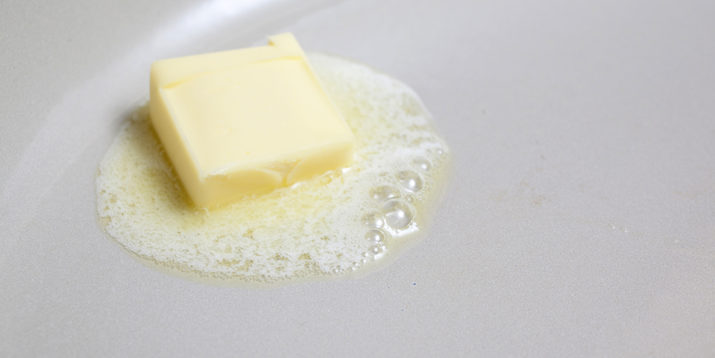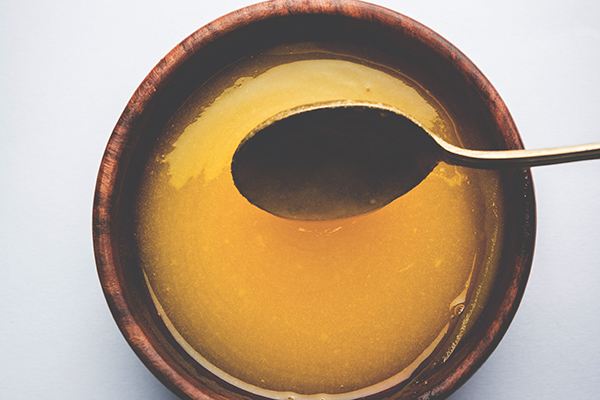Ghee vs. Butter: Which Is Better?

Melt some butter and simmer it until the milk solids settle to the bottom, then separate the golden liquid from the solids on the bottom, and voila: You just made ghee.
Also called clarified butter, “ghee has been used for thousands of years in India as part of Ayurvedic treatments and traditional cuisine as well as for religious purposes,” explains Vandana Sheth, R.D.N., CDCES, FAND, a registered dietitian nutritionist and author of My Indian Table: Quick & Tasty Vegetarian Recipes.
Ghee has become more popular in the U.S. in recent years, and there’s some confusion about how healthy ghee is, particularly how it compares to standard butter.
Here’s what you need to know about ghee vs. butter.

Nutrition of Ghee vs. Butter
If you look at the nutrition facts for ghee vs. butter, you won’t see too much of a difference.
According to the USDA FoodData Central database:
One teaspoon of ghee provides 41 calories, 5 grams of fat, and 3 grams of saturated fat.
One teaspoon of butter provides 34 calories, 4 grams of fat, and 2 grams of saturated fat.
(A serving size is only a teaspoon for either ghee or butter.)
However, butter has about half a gram of trans fat per tablespoon, while ghee has no trans fat, Sheth says.
Some say the saturated fatty acid profiles of ghee and butter differ, but according to the USDA, the makeup of the saturated fats are almost identical.
Which Is Healthier: Ghee or Butter?

Since there’s very little difference between ghee and butter nutritionally, neither is healthier (or less healthy) for you.
While both are fats, remember, “fat is an important part of our diets; we need it in moderation,” says registered dietitian and nutritionist Jalpa Sheth, R.D., CDN.
The Dietary Guidelines for Americans 2020-2025 says to keep fats to 20% to 35% of your caloric intake.
That’s about 33 to 58 grams of fat a day if you eat 1,500 calories daily.
(However, most of that fat will likely come from other, more nutritionally balanced sources.)
One aspect of ghee that may make it “healthier” for some people is the reduced amount of lactose.
Although both butter and ghee come from milk, since you strain out the milk solids to make ghee, the liquid clarified butter is almost lactose-free, Vandana Sheth says.
That means people who are lactose intolerant or sensitive to lactose may better tolerate ghee.
When Should You Choose Ghee vs. Butter?
The biggest difference between these two fats is in the ghee vs. butter taste profiles.
Ghee has a nutty, richer flavor. It also has a distinct aroma.
Whereas you probably don’t notice the smell of butter in a pan, you will detect ghee cooking and may notice it in the dishes you make.
Ghee’s flavor plus its high smoke point (450 degrees Fahrenheit compared to butter’s 302 degrees Fahrenheit) make it better than butter for some cooking situations, such as those below:
- Sautéing veggies
- Cooking eggs
- Making grilled cheese
- Pouring over veggies before roasting
- Drizzling on popcorn
- Using for dipping sauce in place of butter
To see if you like the taste of ghee, Jalpa Sheth suggests trying a teaspoon on a carb like rice or butter.
As a bonus, this addition of fat will help keep your blood sugar levels more stable after eating the carb, she adds.
Want more expert nutrition tips and advice? Head over to BODNutrition.com to learn how Beachbody nutrition programs and products can help you lead a healthier lifestyle.
